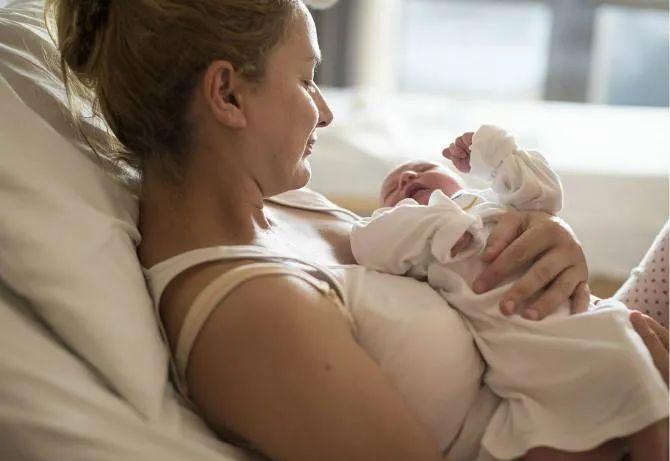This article is reproduced with permission from Academic Latitude (ID: Global_Academia)
On December 18, Wang Lihong's ex-wife Li Lianglei broke the news on social media, which is believed to surprise many friends who pay attention to the entertainment industry. The long article mentions that the parties are "constantly being promoted by one child after another", "either in the preparation for pregnancy, pregnancy, or breastfeeding and childbearing", so they are forced to give up their work and life, and their bodies and minds have undergone many changes. In just a few sentences, it is not easy for women.

The parents of public figures are short and not our focus, but the time between pregnancies for women and the impact of this time on women's health is a serious scientific topic.
The topic is never easy for women who want to raise multiple children: on the one hand, the risks associated with pregnancy increase with age; on the other hand, the shorter pregnancy cycle may affect the health of the mother and fetus. How should there be a balance between the two?
In 2018, a paper published in the prestigious medical journal JAMA Internal Medicine provided a detailed analysis of the problem. The researchers collected data on nearly 150,000 Canadian pregnant women to understand what the short interval between two births meant for pregnant women of different ages. Here are their findings.
Finding one: Pregnancies are too frequent and at risk for women of all ages.
Although this finding seems easy to understand, it actually surprised the researchers. They divided pregnant women into groups based on age, one under 20 years old, one group 20 to 34 years old, and the other group 35 years old and older. According to their initial conjecture, as they age, women's socio-economic level should improve, and they will be better prepared for health insurance and so on. In addition, if these women want to have multiple children in a short period of time, they are more likely to plan with their families and so on.
Younger women are more likely to have unwanted pregnancies than older women, and may not be financially prepared. Based on this consideration, researchers originally speculated that if one litter does not stop, young women will face greater risks.
Effects of different pregnancy intervals on mother (left) and fetus/newborn (right). Dark blue is the result of an unadjusted predictable risk, and orange is the result of adjusted predictable risk. (Image source: References[1])
But the results of the analysis indicate that this guess is not accurate. "In fact, we found that women of all ages (at intervals that are too short) have a negative risk to their babies." Dr. Laura Schummers, the first author of the study, said.
Finding two: For women of different ages, the types of risk are not the same.
Whether for women aged 20 to 34, or 35 years and older, pregnancies that occur too frequently carry risks, but the types of these risks are not consistent. For young women, this risk occurs more often in the fetus or newborn. This includes issues such as spontaneous preterm birth; for women over the age of 35, the risk is more on their own.
Finding three: Pregnancy should not be too frequent, it is recommended to wait at least a year and a half.
Since frequent pregnancies pose risks, how often is it? The World Health Organization's recommendation is to wait at least about 18 months from the birth of the last child to the time a new life is conceived. Shorter than this time can significantly increase the associated risks, such as newborn death, low birth weight, and preterm birth.
The findings of this study are consistent with the recommendations of the World Health Organization. For pregnant women aged 35 and over, if they become pregnant again after only 6 months after giving birth, about 6.2 out of every 1,000 people will have serious illness or even death. Waiting 18 months to get pregnant reduces the risk to only 2.6 out of every 1,000 people who have problems. While absolute numbers may not seem like much difference, they are actually a big improvement.
The same is true for women aged 20 to 34. If you get pregnant again just 6 months after giving birth, there will be 20 stillbirths, premature births, and too small newborns for every 1,000 people. If you wait 18 months, the risk can be reduced to about 14 per 1,000 people.
Dr. Laura Schummers, the first author of the study (Image source: University of British Columbia, the official website of Dr. Laura Schummers's research group)
Taken together, this study suggests that pregnancies that are too frequent can pose risks to the health of women and offspring. As for the reasons behind this, the researchers have proposed a current theory: having a baby may consume a lot of nutrients such as iron and folic acid in a woman's body. So it takes a while for women to return to pre-fertile levels. Re-pregnancy too early will be a burden on the female body. Of course, this theory needs further research to confirm.
With the progress of society, modern women have more opportunities for education, and they also have extraordinary insights and excellent earning ability, and can make a lot of contributions to society. To simply use women as fertility machines is clearly an outdated and incorrect view. The authors of this study point out that the interval of 18 to 24 months before getting pregnant is a better time interval. By understanding the health effects of pregnancy spacing, it helps every woman who wants multiple children to understand the risks, better organize their lives, and live the life they want.
Editor: WuXi AppTec Content Team
Resources
[1] Laura Schummers et al., (2018), Association of Short Interpregnancy Interval With Pregnancy Outcomes According to Maternal Age, JAMA Intern Med. doi:10.1001/jamainternmed.2018.4696
[2] How Long Should Older Moms Wait Before Getting Pregnant Again? Retrieved December 17, 2021, from https://www.npr.org/sections/health-shots/2018/11/01/663181674/how-long-should-older-moms-wait-before-getting-pregnant-again
END